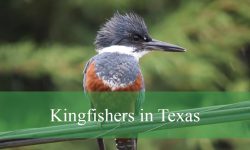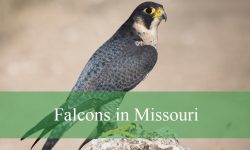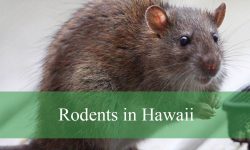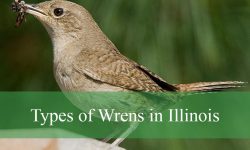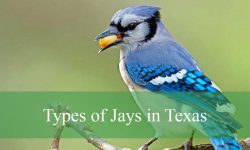Texas offers incredible opportunities to observe swallows in action, with its open skies, diverse habitats, and key position along major bird migration corridors. These fast-flying insectivores can be seen across the state, from coastal wetlands to mountain ranges and bustling towns.
This article highlights 11 swallow species that have been recorded in Texas, including both familiar backyard visitors and rare seasonal migrants. Each profile includes clear identification tips, nesting behavior, and regional distribution to help you tell them apart.
Spotting swallows in flight can be a challenge—but learning their unique features, calls, and nesting habits will give you a deeper appreciation of their role in Texas ecosystems. Let’s explore the swallows that share the sky across the Lone Star State.
Species of Swallows Found in Texas
Barn Swallow (Hirundo rustica)
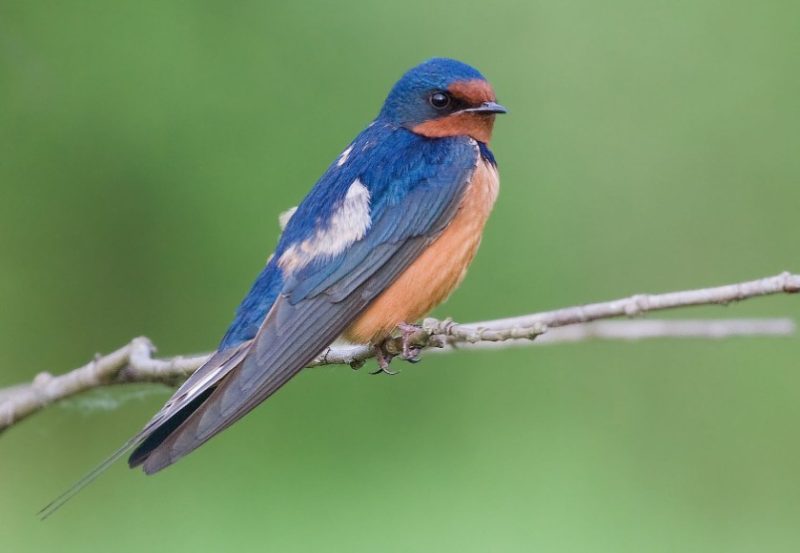
The Barn Swallow is one of the most iconic swallows in North America and is widespread across Texas during the breeding season. It is instantly recognizable by its deeply forked tail, metallic blue-black upperparts, and warm reddish-orange underparts and forehead. Its long, pointed wings and aerodynamic body shape are built for agile, high-speed flight.
Adults typically measure 6.7–7.5 inches in length with a wingspan of about 12.6 inches, making them medium-sized among swallows. They are graceful fliers and often seen gliding and darting low over open fields, meadows, farms, and bodies of water in search of flying insects, which make up nearly their entire diet. Barn Swallows are insectivores and may eat thousands of insects per day, including mosquitoes, flies, and beetles.
These swallows frequently nest on man-made structures such as barns, bridges, and culverts, using mud to build cup-shaped nests under overhangs or eaves. In Texas, they are widespread throughout the state from spring to early fall. They migrate to Central and South America for the winter, making a long and impressive journey.
A fun fact about Barn Swallows is that their deeply forked tails are not just for show—males with longer tail streamers tend to attract more mates, as it indicates health and vitality. Their cheerful, twittering calls and sociable nature make them a welcome sign of spring in Texas.
Cliff Swallow (Petrochelidon pyrrhonota)
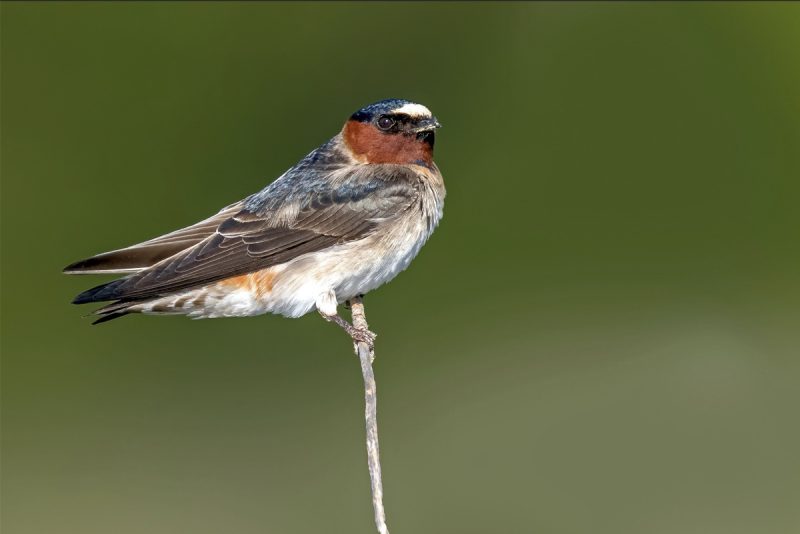
Cliff Swallows are colony-nesting birds that thrive in both natural and urban environments. They are compact and square-tailed, with a buff-colored rump, dark blue back, white forehead, and rusty throat. Their coloration can be subtle from a distance but is striking up close. Unlike Barn Swallows, their tails are short and squared, lacking the long streamers.
Cliff Swallows are slightly smaller than Barn Swallows, measuring around 5.5 inches long with a wingspan close to 11.5 inches. They are highly social and often forage in large flocks, catching insects mid-air with sharp precision. Their diet consists mainly of flying insects, including midges, grasshoppers, and wasps.
In Texas, these birds are commonly found throughout the state, especially in central and northern regions where they build their famous gourd-shaped mud nests under bridges, overpasses, and eaves of buildings. They prefer wide open areas near water, which provide abundant food sources and suitable mud for nest building.
A unique behavior of Cliff Swallows is their ability to recognize their own chicks by voice, even in massive colonies with hundreds of noisy nestlings. Their return each spring to large nesting sites has become a predictable and beloved phenomenon in many Texas communities.
Cave Swallow (Petrochelidon fulva)
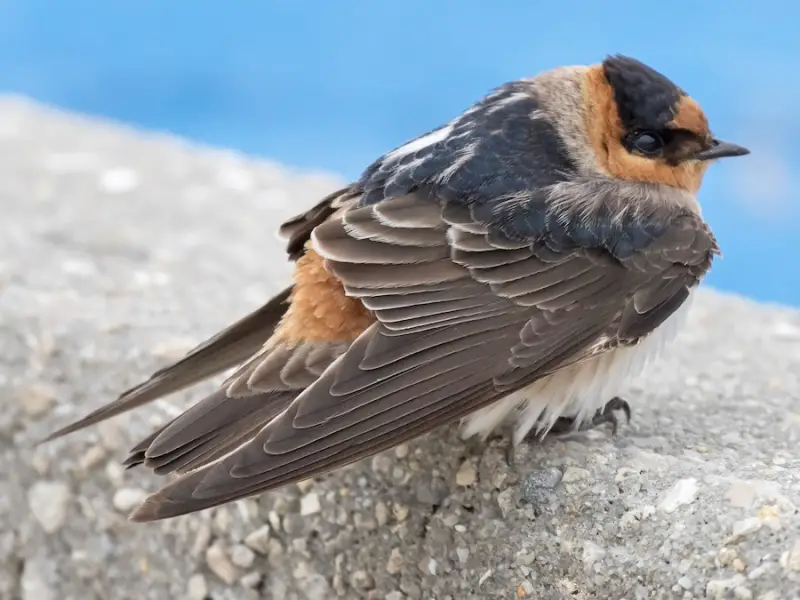
The Cave Swallow is a native Texas breeder, most common in the southern and western parts of the state. It closely resembles the Cliff Swallow but features a paler, cinnamon-colored throat and forehead and a light grayish belly. It has a squared tail and dark wings, with a buffy rump that can be seen in flight.
This species is about the same size as the Cliff Swallow, roughly 5.5 inches long with a 12-inch wingspan. Cave Swallows are agile flyers and feed on a diet of flying insects such as flies, moths, and mosquitoes. They are especially active during the early morning and late afternoon when insect activity is highest.
Originally, Cave Swallows nested primarily in limestone caves and sinkholes, especially in the Edwards Plateau and Rio Grande Valley. However, they have adapted impressively to urban settings and now frequently nest in culverts, highway overpasses, and under bridges, often forming colonies with hundreds of pairs.
An interesting fact is that Texas represents the northernmost breeding range for this species in the U.S. Its adaptation to artificial nesting sites has contributed to a notable expansion in its population in recent decades.
Tree Swallow (Tachycineta bicolor)
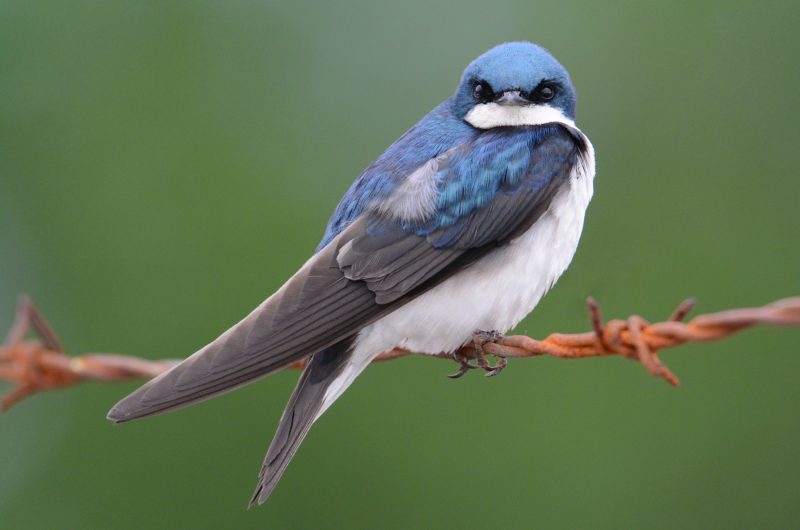
The Tree Swallow is a sleek, shimmering bird known for its iridescent blue-green upperparts and clean white underparts. It has a small, slightly notched tail and a streamlined body that makes it a graceful and fast flier. This species is seen mainly during migration in Texas, particularly in spring and fall.
Tree Swallows measure about 5.5 inches in length with a wingspan of 11.8 to 13 inches. Their diet consists almost entirely of flying insects during the warmer months, but they are also known to eat berries, especially bayberries, in colder weather or when insects are scarce. They often forage over wetlands, open fields, and shorelines.
While they don’t breed commonly in Texas, large numbers pass through the state during migration, particularly in the eastern and coastal regions. They are frequently observed in flocks, sometimes with other swallow species, performing acrobatic maneuvers over water bodies or agricultural areas.
A fascinating fact about Tree Swallows is their cold tolerance—they are one of the few insectivorous birds that can survive early-season freezes, thanks to their ability to digest berries when insects aren’t available. This flexibility helps them arrive early in northern breeding territories.
Bank Swallow (Riparia riparia)
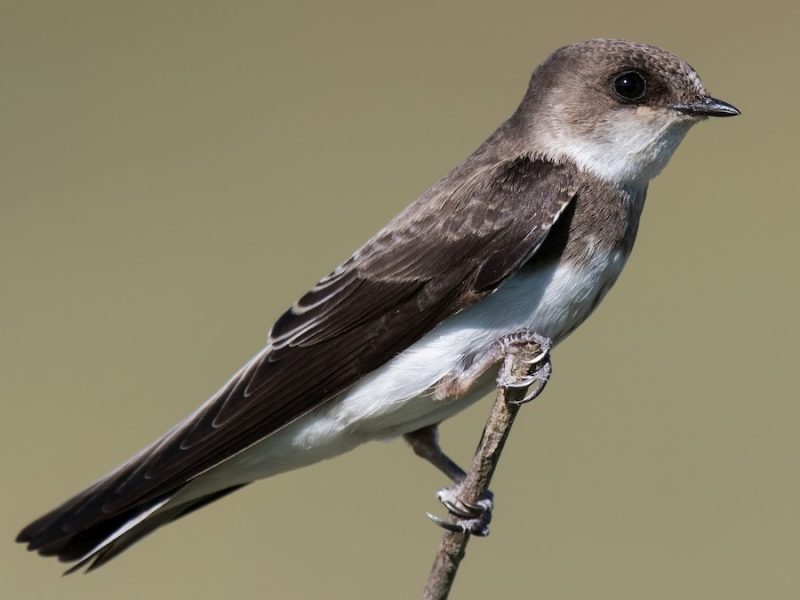
The Bank Swallow is the smallest swallow in North America and is identified by its brown upperparts, white underparts, and a distinct dark chest band across the breast. Its wings are long and pointed, and its tail is slightly notched. It may be overlooked due to its more subdued appearance compared to other swallows.
Adults measure about 4.7–5.1 inches in length with a wingspan of 10.6–11.8 inches. Bank Swallows feed almost exclusively on flying insects such as gnats, flies, and mayflies, which they catch while gliding swiftly over water and open ground. They are social both during feeding and nesting seasons.
In Texas, Bank Swallows are primarily seen during migration in spring and fall. Some may breed in the northern parts of the state where sandy or eroded riverbanks are available. They excavate horizontal tunnels into vertical banks where they nest in colonies, sometimes with dozens or even hundreds of pairs.
A quirky behavior of Bank Swallows is their synchronized aerial group flights, which help disorient predators and protect the colony. Their preference for nesting in natural riverbanks makes them vulnerable to habitat loss due to erosion control and development.
Northern Rough-winged Swallow (Stelgidopteryx serripennis)
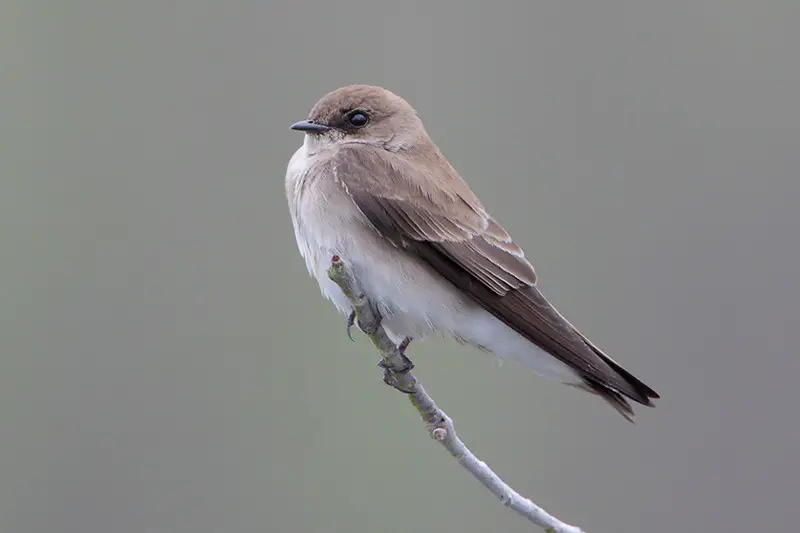
The Northern Rough-winged Swallow is a plain yet elegant species with dull brown upperparts and pale underparts. It has a slightly notched tail and lacks the colorful iridescence seen in other swallows. Its name comes from tiny hooked barbs on the outer wing feathers of males, although these are invisible to the naked eye.
This swallow measures about 5.5 inches in length with a wingspan of 11 inches. Unlike other swallows that gather in large colonies, this species is more solitary and often nests alone or in small groups. It hunts flying insects such as flies, beetles, and mosquitoes, typically near water, roadsides, or open fields.
In Texas, the Northern Rough-winged Swallow breeds throughout the state and is especially common in spring and summer. It favors nesting in holes in vertical dirt banks, drainage pipes, and even abandoned kingfisher burrows. Its quiet, buzzy call and direct, low flight style help distinguish it from other swallows.
A fun fact is that this species sometimes reuses man-made cavities like old PVC pipes or metal tubes in walls, making it quite adaptable to urban and suburban environments.
Purple Martin (Progne subis)
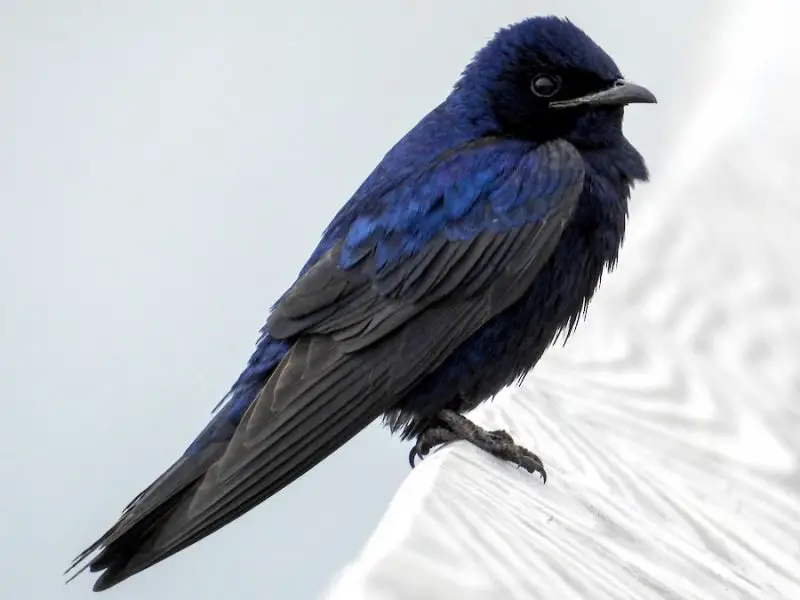
The Purple Martin is North America’s largest swallow and a favorite among bird enthusiasts in Texas. Adult males are glossy blue-black all over, while females and juveniles are duller with grayish underparts and darker backs. They are known for their loud, bubbly calls and graceful flight.
They typically measure 7.5–8 inches in length with a wingspan of up to 15 inches. Purple Martins are strong fliers and often soar higher than other swallows. Their diet consists almost exclusively of flying insects, including dragonflies, moths, beetles, and wasps. They catch their prey on the wing using sharp aerial maneuvers.
In Texas, Purple Martins are widespread breeders, especially in areas where humans provide artificial nesting houses or gourd clusters. These birds rely heavily on people for nesting sites in the eastern U.S., making backyard birdhouses critical to their survival. They begin arriving in Texas as early as late January along the Gulf Coast and migrate to South America by late summer.
An interesting fact is that early Native Americans are believed to have hung hollowed-out gourds to attract Purple Martins even before European settlers arrived—making them one of the oldest bird-human relationships in North America.
Violet-green Swallow (Tachycineta thalassina)

The Violet-green Swallow is a striking bird with iridescent green and violet plumage that gleams in sunlight. It also has distinct white patches on the sides of its rump that help distinguish it from similar species. Its underparts are clean white, and it has a slightly notched tail.
This species measures about 4.7–5.5 inches in length and has a wingspan of approximately 10.5 inches. Violet-green Swallows are swift, agile fliers that forage high above the ground for flying insects. They prefer open woodlands, mountain slopes, and areas near water.
In Texas, they are considered rare visitors, usually seen during migration or occasionally in far western regions such as the Davis Mountains. Sightings are uncommon but have increased slightly over time, likely due to changes in migratory patterns or weather events.
A unique trait of this species is its ability to use natural cavities and old woodpecker holes for nesting—similar to Tree Swallows. Their vibrant coloration makes them a favorite among birdwatchers lucky enough to spot them in Texas skies.
Southern Rough-winged Swallow (Stelgidopteryx ruficollis)
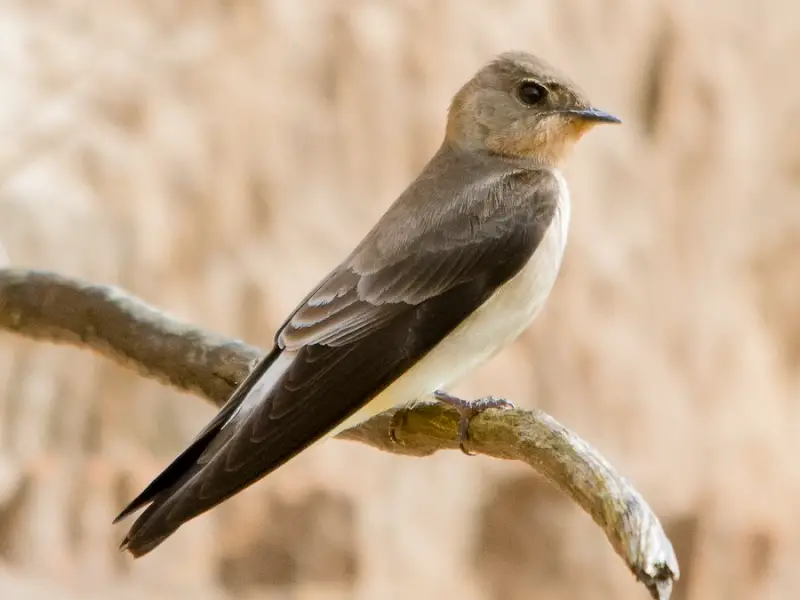
The Southern Rough-winged Swallow is closely related to the Northern species but has a richer, more rufous-colored throat and upper breast. Its plumage is overall warm brown with slightly lighter underparts. Like its northern counterpart, it has a straight flight and an understated appearance.
It measures around 5.5 inches long with a wingspan of about 11 inches. These swallows feed on flying insects, which they catch in flight over open water, agricultural fields, and forest edges. Their foraging style is smooth and less erratic compared to some other swallows.
In Texas, this species is extremely rare and mostly found in the southernmost regions, especially in the Rio Grande Valley. It is more common in Central and South America, and individuals seen in Texas are likely vagrants or possibly expanding their range due to climate shifts.
A curious fact is that this species sometimes overlaps with the Northern Rough-winged Swallow during migration, and distinguishing the two requires close observation of throat coloration and vocalizations.
Mangrove Swallow (Tachycineta albilinea)
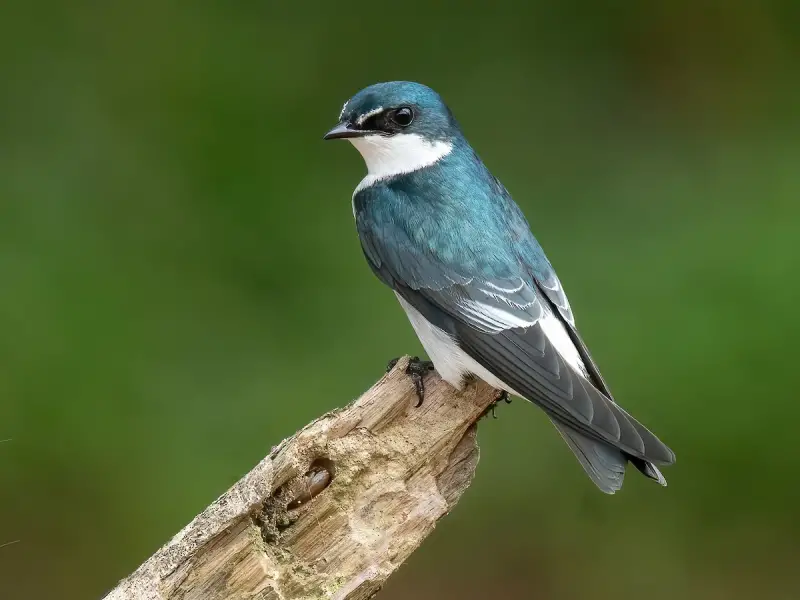
The Mangrove Swallow is a tropical species with glossy green upperparts, white underparts, and a conspicuous white line above the eye. It has a slightly forked tail and compact body suited for agile flight over water. This bird is typically found in mangrove forests and coastal lagoons in Central America.
It measures about 5 inches in length with a wingspan close to 11 inches. It feeds mostly on flying insects and is often seen foraging low over estuaries and tidal flats. It is territorial during breeding season and prefers nesting in tree cavities or artificial structures near water.
In Texas, the Mangrove Swallow is an accidental visitor, with very few records—mostly from South Padre Island and the Lower Rio Grande Valley after strong tropical storms. Its presence in the state is unpredictable and rare, making it an exciting find for dedicated birders.
An interesting note is that despite its tropical range, the Mangrove Swallow can adapt to human-altered environments, including marinas and bridges, where suitable nesting sites exist.
Bahama Swallow (Tachycineta cyaneoviridis)

The Bahama Swallow is an endangered and highly localized species that resides almost exclusively in the Bahamas. It has shimmering green upperparts, a white belly, and white undertail coverts. Its tail is moderately forked, and it has a compact, elegant body typical of swallows.
This swallow measures about 5.5 inches in length and has a wingspan around 11 inches. Like other members of its genus, it feeds on flying insects caught in midair. It favors pine forests, open glades, and clearings where it can feed and nest in cavities.
In Texas, the Bahama Swallow is considered a mega-rarity and has only been reported a few times, possibly blown in by hurricanes or during extreme weather events. Most sightings have occurred along the Gulf Coast or in coastal birding hotspots.
A fascinating detail about this species is its dependence on pine snags for nesting, which has made it particularly vulnerable to habitat loss in the Bahamas. Sightings in Texas are so rare they often make statewide birding news when confirmed.
FAQs about Swallows in Texas
What types of swallows are most common in Texas?
The most common swallow species in Texas include the Barn Swallow, Cliff Swallow, Cave Swallow, Northern Rough-winged Swallow, and Purple Martin. These birds are widely distributed throughout the state during the breeding season and can be seen foraging in open areas, near water, and nesting on human-made structures. Some species, such as the Tree Swallow and Bank Swallow, are mostly seen during migration.
When do swallows arrive in Texas?
Swallows begin arriving in Texas as early as late January along the Gulf Coast, with peak numbers typically observed in March and April. Most species stay through the summer for breeding, and migration south begins in late July through September, depending on the species.
Where can I see swallows in Texas?
Swallows can be found throughout Texas, from urban and suburban areas to rural farmlands, wetlands, and highway overpasses. Popular places include state parks, lakeshores, bridges, and culverts, especially in Central and South Texas. Purple Martins are often seen in neighborhoods with nesting houses, while Cave Swallows favor the Edwards Plateau and Rio Grande Valley.
What do swallows eat?
Swallows are aerial insectivores, feeding almost entirely on flying insects. Their diet includes mosquitoes, flies, beetles, moths, wasps, and midges. They catch prey while flying, often seen swooping low over fields, lakes, or parking lots during active feeding periods.
Do swallows build nests on houses?
Yes, some swallow species—particularly Barn Swallows and Cliff Swallows—commonly build nests on houses, garages, porches, or under eaves. They use mud and grass to form cup-shaped or gourd-shaped nests attached to vertical surfaces. Cave Swallows may also nest under man-made structures like culverts and overpasses.
Are swallows beneficial?
Absolutely. Swallows help control insect populations, including pests like mosquitoes and agricultural insects, making them beneficial for both the environment and humans. Their presence often indicates a healthy ecosystem, and their nesting activities can even help reduce the need for chemical pest control.
Are any swallow species in Texas considered rare?
Yes. While most species are common, a few are considered rare or accidental in Texas. These include the Violet-green Swallow, Southern Rough-winged Swallow, Mangrove Swallow, and Bahama Swallow. These are typically seen in very limited areas or during migration and storm-related displacement.
How can I attract swallows to my yard?
To attract swallows, especially Purple Martins, consider installing a martin house or a cluster of gourd-shaped birdhouses in an open area. Providing a nearby water source, avoiding pesticides, and ensuring safe nesting sites will also help. Barn Swallows may nest in open barns or structures with overhead shelter.
Do swallows migrate from Texas?
Yes, all swallow species in Texas are migratory. After breeding in spring and summer, they migrate to Central and South America for the winter. Some, like Purple Martins, begin leaving as early as late July, while others may linger into September.
Are swallows protected in Texas?
Yes. Swallows are protected under the Migratory Bird Treaty Act, which makes it illegal to harm, trap, or destroy active nests (nests with eggs or chicks) without a special permit. If swallows are nesting on buildings and causing issues, any mitigation should be done outside of breeding season and in accordance with wildlife regulations.


